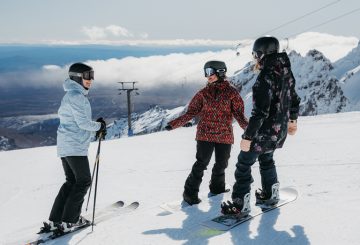Ang mga inspeksyon sa pag-upa ay maaaring nakakainis para sa mga upa, na madalas na nag-aalala tungkol sa kung gaano malinis ang kailangan ng kanilang tahanan. Sinusuri ng mga may-lupa o tagapamahala ng pag-aari ang kalinisan, pinsala, at gumagana ang mga kagamitan. Sinabi ni Jessica Currie mula sa Ray White na ang mga inspeksyon ay makakatulong na protektahan ang mga upa mula sa hindi patas na mga pag-aangkin kap
Itinuro ni Zanian Steele mula sa Renters United na ang ilang mga may-ari ay walang kaalaman tungkol sa kanilang mga responsibilidad, lalo na ang mga mas maliit na may-ari. Sa panahon ng inspeksyon, hahanap ng mga tagapamahala ng property ang pangkalahatang kalinisan, ngunit hindi ito kailangang maging perpekto, tulad ng isang hotel. Halimbawa, ang ilang mga milya o kaunting alikabok ay katanggap-tanggap.
Gayunpaman, maaaring kailanganin ng mga upa na iwanan ang ari-arian sa mas mahusay na kondisyon kapag lumipat sila. Maaaring kumuha ng mga may-ari ng lupa sa panahon ng mga inspeksyon, ngunit hindi sila dapat litrato ng mga personal na item maliban kung kinakailangan. Ang mga inspeksyon ay isang pagkakataon din para sa mga upa na mag-ulat ng anumang mga isyu sa pagpapanatili.
Maaaring mangyari ang mga inspeksyon sa pagitan ng 8 ng umaga at 7 ng gabi para sa pag-upa at 8 ng umaga hanggang 6 ng gabi para sa mga boarding house. Dapat ipaalam sa mga upa ng hindi bababa sa 48 oras bago ang inspeksyon. Gayundin, hindi kailangang linisin ng mga upa ang labas ng ari-arian; iyon ang trabaho ng may-ari.
Kung ang mga upa ay may mga alagang hayop o ginagamit ang property sa isang tiyak na paraan, maaari silang maging responsable para sa paglilinis ng mga tukoy na lugar. Halimbawa, kung ang isang BBQ ay nagdulot ng kaguluhan sa isang deck, maaaring hilingin sa nag-upa na linisin ang lugar na iyon.
Maaaring buksan ng mga tagapamahala ng pag-aari upang suriin ang mga tagas ngunit dapat igalang ang privacy ng nag-upa. Mahalaga para sa mga may-ari na ipaalam sa mga upa kung nais nilang suriin ang mga lugar kung saan nakaimbak ang mga personal na item.
Hindi dapat pilitin ang mga upa na magbayad para sa propesyonal na paglilinis maliban kung nakasaad ito sa isang pag-upa, at hindi nila kailangang mag-alala tungkol sa normal na pagsusuot sa ari-arian. Ang mga isyu tulad ng susuot na sahig o maliit na mantsa mula sa regular na paggamit ay itinuturing na patas na pagsusuot, habang hindi ang sinasadyang pinsala.
Ang pag-unawa sa mga karapatan at pakikipag-usap sa mga may-ari ay mahalaga para sa mga upa. Dapat nilang idokumento ang anumang mga isyu sa mga larawan at email. Kung lumitaw ang mga problema na hindi malutas, maaaring humingi ng tulong sa Citizens Advice Bureau o sa Tenancy Tribunal.
Ang mga regular na inspeksyon ay makakatulong na subaybayan kung paano pinapanatili ang isang ari-arian at maaaring protektahan ang mga upa mula sa hindi patas Tinitiyak nito na kinikilala ang anumang pagsusuot, iniiwasan ang mga sorpresa sa pagtatapos ng isang pag-upa.






























































